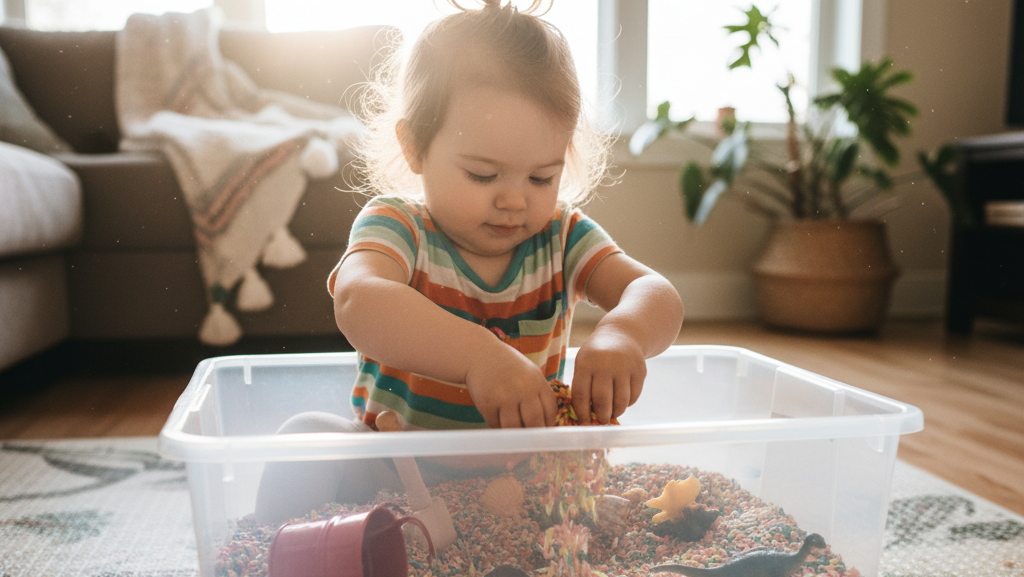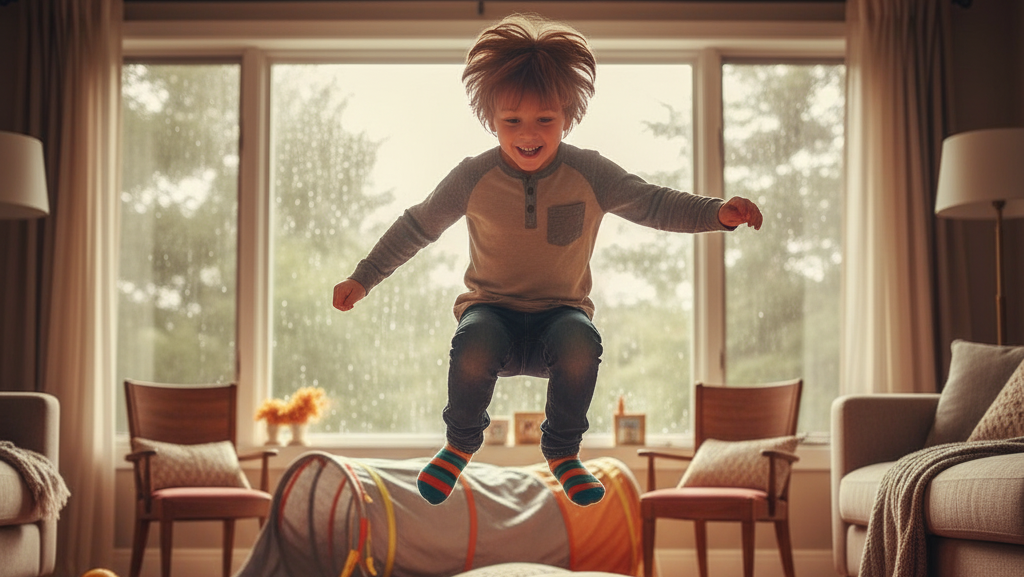
The Ultimate Guide to Sensory Bins: What They Are and How to Make One
If you’ve spent any time in the world of parenting blogs or Pinterest, you’ve likely seen them: colorful, inviting tubs filled with rice, sand, or water, complete with scoops, toys, and happy little hands digging in. These are sensory bins, and they are far more than just a fun way to keep a toddler busy (or make a mess).
A sensory bin is a simple container filled with a material that stimulates the senses, allowing a child to explore, learn, and create through hands-on, tactile play. It is a powerful developmental tool that can calm an anxious child, engage a busy one, and build critical skills for school and life. This guide will explain the science behind sensory play and give you everything you need to create your own amazing sensory bins at home.
The “Why” Behind Sensory Play
At its core, sensory play is any activity that engages a child’s senses: touch, sight, sound, smell, and taste. For young children, this is how they learn about the world. When a child squishes Play-Doh, listens to the sound of rice being poured, or feels the coolness of water, their brain is forming new neural connections that are the foundation for more complex learning.
The benefits are immense:
- Emotional Regulation: For many children, the repetitive, tactile nature of scooping, pouring, and sifting is incredibly calming. It can help an overstimulated or anxious child to focus, self-soothe, and regulate their emotions and behavior.
- Fine Motor Development: Using tools like scoops, tongs, and their own fingers to manipulate small items in a bin is a fantastic workout for hand and finger muscles. This builds the strength and coordination needed for writing, buttoning, and using utensils.
- Cognitive Growth: Sensory bins are mini-laboratories for learning. Children practice problem-solving (how to get the beans into the small bottle), math skills (measuring, pouring, counting), and language development as they describe what they are seeing and feeling.
- Tactile Exploration: For children who are sensitive to certain textures, sensory bins provide a safe, low-pressure way to explore materials they might otherwise avoid. This can be especially helpful for picky eaters, as learning to tolerate touching a new texture is the first step toward being willing to taste it.
How to Make a Sensory Bin: The Basic Formula
Creating a sensory bin is simple and inexpensive. You just need three basic components.
- The Bin: This can be any container that can hold your materials. A shallow, under-the-bed plastic storage bin is perfect, but you can also use a large mixing bowl, a baking dish, or even a sturdy cardboard box.
- The Filler: This is the main material your child will explore. Choose something that is safe and age-appropriate. Always supervise your child, especially with small items that could be a choking hazard.
- Taste-Safe for Toddlers: Dry oatmeal, cornmeal, Cheerios, or even water.
- For Older Children: Dried rice, beans, pasta, sand, pom-poms, shredded paper, or cotton balls.
- The Tools: Add a few simple tools for scooping, pouring, and exploring. Think measuring cups, spoons, funnels, small shovels, kitchen tongs, or tweezers.
10+ Creative Sensory Bin Ideas
Once you have the basics, you can create endless themed worlds for your child to explore. Here are a few ideas to get you started:
| Theme | Filler Material | Tools & Toys |
| Ocean Exploration | Blue-dyed rice, water with a drop of blue food coloring, or blue Jell-O | Plastic sea animals, seashells, small nets, cups |
| Construction Zone | Dry black beans, cornmeal, or sand | Small toy trucks, bulldozers, shovels, rocks, funnels |
| Farm Life | Uncooked oatmeal, split peas, or corn kernels | Farm animal figurines, small fences, scoops, small buckets |
| Alphabet Soup | Dry alphabet pasta or alphabet-shaped cereal | Bowls, spoons, ladles, cups |
| Dinosaur Dig | Sand, dirt, or crushed crackers | Plastic dinosaurs and skeletons, small shovels, paintbrushes for “excavating” |
| Garden Fun | Potting soil or black beans | Small pots, fake flowers, trowels, watering can |
| Rainbow Rice | Batches of rice dyed different colors | Cups, scoops, and bowls for color sorting |
| Water World | Water with dish soap for bubbles | Sponges, cups, ladles, funnels, floating toys |
| Winter Wonderland | Cotton balls, shredded white paper, or instant snow | Polar animal figurines, plastic snowflakes, scoops |
| Bug Hunt | Black beans or dry coffee grounds | Plastic bugs, tweezers, magnifying glass, small nets |
| Baking Fun | Flour, oats, or cloud dough (flour and baby oil) | Measuring cups, spoons, whisks, small baking tins, cookie cutters |
Tips for Success and Safety
- Supervise, Supervise, Supervise: This is the most important rule. Always stay with your child during sensory play, especially if the bin contains small items.
- Contain the Mess: Place the bin on a large towel, old sheet, or plastic tablecloth to make cleanup easier.
- Set Clear Rules: Before you begin, establish simple rules like, “The rice stays in the bin.” If materials start flying, calmly give a reminder. If it continues, the activity is over for the day.
- Let Them Lead: The goal is exploration. Don’t worry about a specific outcome. Let your child play and discover at their own pace. Model how to scoop and pour, then step back and watch their imagination take over.
Sensory play is a cornerstone of occupational therapy. If you notice your child struggles with sensory sensitivities, emotional regulation, or picky eating, and you’d like to explore personalized strategies, our occupational therapists are here to help. Learn more about how our play-based approach can support your child’s unique needs.


